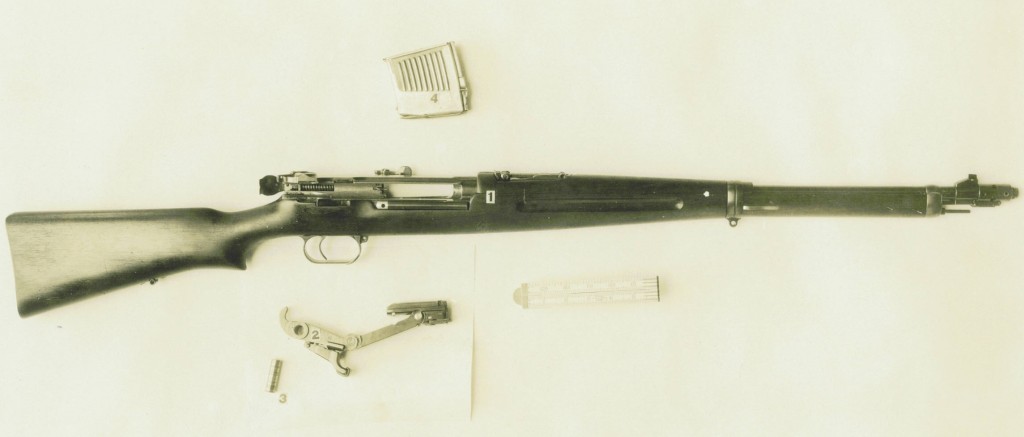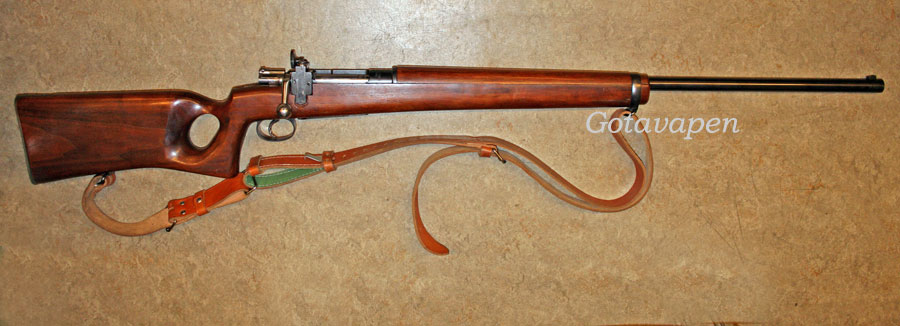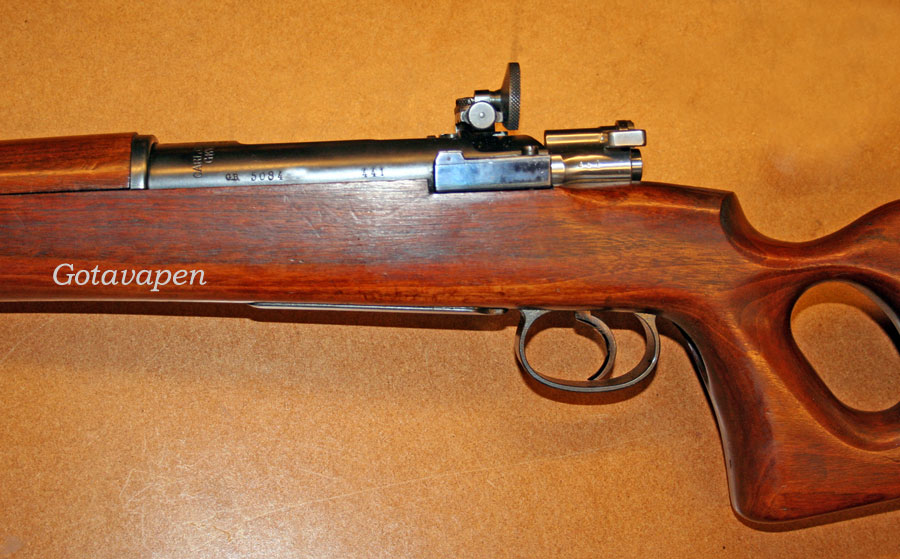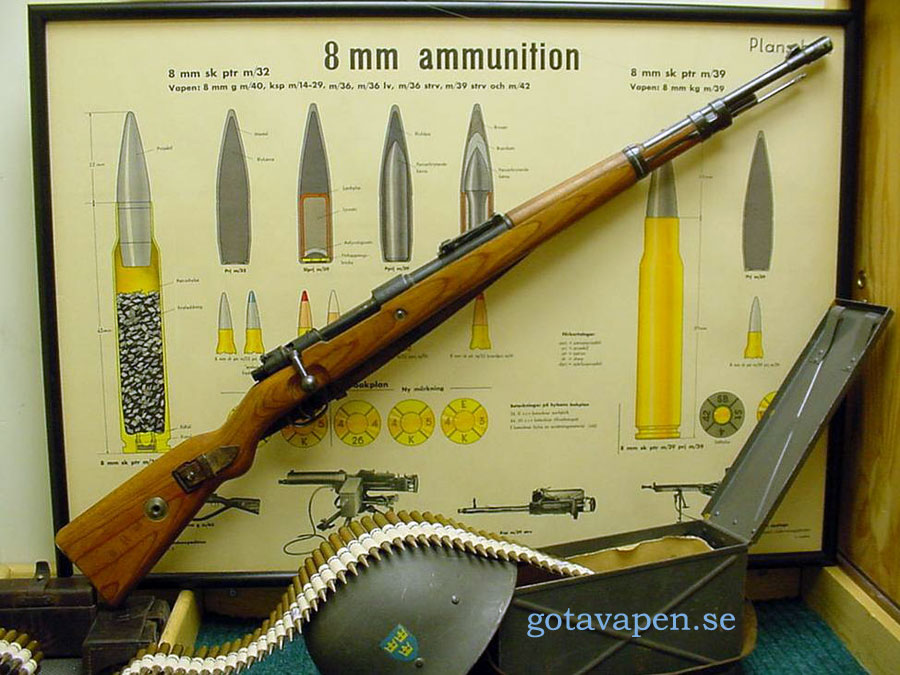Bergmann 1897 Carbine
November 28, 2013 Ian McCollum Semiauto pistol, Semiauto Rifles 13
Several of the popular pistols of the very early 1900s were offered by factories in carbine configurations, with 10-14 inch barrels and permanent shoulder stocks (not to be confused with the detachable stock/holsters also made for many of these pistols). In particular, the Luger, Mauser 96, and Mannlicher designs were offered this way. Well, one of our readers asked if carbine versions of the Bergmann pistols were ever made, and I responded that they were not…and it turns out I was not quite correct.
At least a few Bergmann carbines were made, both as pistol-carbines and as dedicated shoulder arms. From Milpas.cc we have a photo of one such carbine, wonderfully engraved and accepted with horn and gold inlay:

The serial number on this example is 34, and it is marked “TH Bergmann – Gaggenau”, indicating that it was manufactured at Bergmann’s own factory. The top of the bolt is marked “Karabiner Bergmann / Patent Brevete S.G.D.G.”, and – most interesting – the rear of the bolt has a fancy inlaid “TB” marking. Unfortunately, this appears to be the only photograph of this or any other Bergmann carbine that can be found today, and the available literature does not mention them.
US Bommarito semiauto rifle
December 22, 2010 Ian McCollum Semiauto Rifles 0
The Bommarito was one of the many rifle designs sent to the US Ordnance Department when they announced a search for a capable autoloading rifle for the US Army. It was not one of the more successful entrants, though. It used a toggle lock like the Luger and later Pedersen rifle, and was heavy, unreliable, and liked to eat shooters’ fingers in its toggle mechanism.

We have a couple more images available in the Bommarito page of the Vault…
Rheinmetall Model 1928
May 8, 2015 Ian McCollum garand development, Manuals, Semiauto Rifles 10
The Rheinmetall model 1928 (designed by one Karl Heinemann and made in Switzerland) was one of the rifles tested by US Ordnance in trials that eventually settled on the Garand and Pedersen designs (and ultimately chose the Garand). The Rheinmetall rifle had a pretty interesting combination of features…

Heinemann/Rheinmetall 1928 rifle field stripped, Aberdeen photo
It was chambered for the .276 Pedersen cartridge, and used a detachable magazine that mounted horizontally on the left side of the rifle. As you can see in the above photo, it had a toggle-type bolt, but it was neither short recoil like the Luger nor delayed blowback like the Pedersen rifle. Instead, it had a muzzle cup which would capture gas from firing and slide forward (much like the Bang or Liu rifles). This movement was transmitted through a rod under the stock to pull a locking cam out of engagement, thereby unlocking the bolt. Residual pressure in the bore would then throw the bolt backwards to cycle.
Overall weight of the rifle was 4.5kg (9.9 pounds), and magazines were made holding 5, 10, 15, and 25 rounds. It did also have a stripper clip guide on the right side of the action to allow loading by clip. The Ordnance Board like that it was effectively sealed against dirt getting into the action when closed, but disliked several other elements:
- the feed system (they wanted Mannlicher-style clips rather than box mags)
- the sights (it had Mauser-style notch and post sights, and the Board preferred aperture sights)
- the weights (they wanted something under 9 pounds, which the ZH29 proved was possible)
- the number of parts (it had 114)
- the lightweight barrel (which contributed to poor cooling in their opinion)
- unreliable functioning
The Rheinmetall rifle was tested in August of 1929, and removed from further consideration as a result of those problems.
A description of the operation and disassembly of the rifle is available here:








